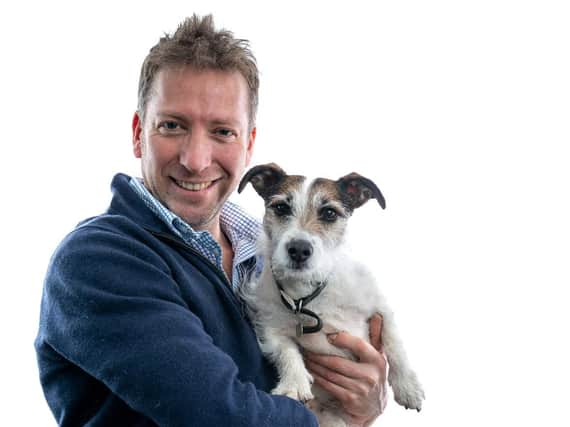The Yorkshire Vet, Julian Norton discovers 'cat wrapping' and other vintage veterinary remedies


Watching the current Channel 5 remake of All Creatures Great and Small, it is abundantly evident that some things are exactly the same; cows needed to be calved back then in exactly the same way as they do now.
The same bugs caused mastitis in Herriot’s day as today, although admittedly there are now powerful and effective antimicrobials available to quell the infection, as long as the dairy company allows it.
Advertisement
Hide AdAdvertisement
Hide AdWe’ve advanced in some areas, but I’m certain there are still bottles of potions and ointments on the shelves of many large animal practices across the country reminding vets of days gone by. Personally, I’ve mostly refrained from exploring these ancient remedies but have been tempted, on occasions, by Friars Balsam.
The brown bottle I found containing small and ominously blue oblong tablets remained very much off limits. On its label, the scrawled words For Stupefying Pigeons, without any reference to the drug, its concentration or its contraindications did nothing to fill a modern practitioner with confidence about the provenance of the tablets.
Some years ago, when various antediluvian veterinary relics started to arrive at the practice where I worked, en route to a local museum, the senior partner could be found sifting through the rusty antiques, muttering to himself: “That’s a good ’un. We’ll keep that.” It was a measure of how little some aspects of the profession had advanced.
But in other ways, things are very different nowadays. Modern advances, many enthusiastically borrowed from our medical cousins, have swamped the profession. MRI machines, for example, once regarded with suspicion (mostly because no one knew how to interpret the images) can now be found within half an hour’s travel of most first opinion practices and are available, at a price, to aid (or confuse) the diagnosis of any condition.
Advertisement
Hide AdAdvertisement
Hide AdVeterinary anaesthesia, and the monitoring thereof, has developed to be on a par with human anaesthesia, which is a very good thing. Vets can now happily tackle a “general” with confidence rather than anxiety, even in an elderly cat. When I first started my career, it was not uncommon for some vets to take a different approach altogether.
Occasionally, when a geriatric cat was in need of some dental work, the procedure on the ops list said ‘dental-wrap cat’. At first, I could not understand what this meant.
Closer questioning revealed it to be the old-fashioned and, quite frankly, cruel practice of enveloping the poor cat in a towel so it couldn’t struggle, while any loose teeth were swiftly extracted. The theory was the job was quick and simple and, if the cat was held still, could be completed without the need for (in those days potentially quite dangerous) general anaesthesia.
It might have been an accepted procedure in Herriot’s day but, even 25 years ago, there was no place for such a practice.
Advertisement
Hide AdAdvertisement
Hide AdSo, yes, we can love to love the old stories and reflect with a warm glow about those halcyon, brown-coated veterinary days, but give me modern practice, precise X-rays, defined diagnoses, quality analgesics and accurate monitoring of my patients any day.
*The Yorkshire Vet continues on Tuesday evenings at 8pm on Channel 5.
Support The Yorkshire Post and become a subscriber today.
Your subscription will help us to continue to bring quality news to the people of Yorkshire. In return, you'll see fewer ads on site, get free access to our app and receive exclusive members-only offers.
So, please - if you can - pay for our work. Just £5 per month is the starting point. If you think that which we are trying to achieve is worth more, you can pay us what you think we are worth. By doing so, you will be investing in something that is becoming increasingly rare. Independent journalism that cares less about right and left and more about right and wrong. Journalism you can trust.
Thank you
James Mitchinson
Comment Guidelines
National World encourages reader discussion on our stories. User feedback, insights and back-and-forth exchanges add a rich layer of context to reporting. Please review our Community Guidelines before commenting.